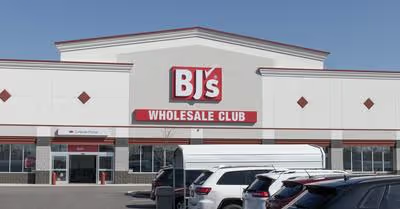Table of Contents
What Are Independent Living Apartments?
Compared to the living facilities of old, a senior independent living apartment is the perfect place for active seniors looking to take advantage of their retirement and enjoy modern living.
Senior independent living allows seniors to maintain their current living arrangements and take advantage of numerous conveniences. There are numerous choices for seniors that want to downsize but continue living on their own. They could also choose to want to be around other seniors in a community.
One of the most common options is independent living apartments, with the other being age-restricted arrangements. It is important to know that these two living arrangements are completely different, with the major difference being amenities.
Age-restricted communities are simply a mobile home or apartment complex community with every resident being over 55 years of age. Generally, these age-restricted living communities do not take away the responsibilities associated with apartment rental or homeownership.
Independent living apartments, conversely, come withs services that ensure you can concentrate on enjoying your retirement. The community, instead of the resident, handles maintenance, both outdoor and indoor. The community also handles housekeeping.
Benefits of Independent Living Apartments
Apart from seniors not having to concern themselves with housekeeping and maintenance, independent living apartments are usually designed with supplementary resort-style conveniences and amenities, making living there every day feel like a vacation.
Some independent living communities enable their residents to take advantage of fitness facilities, salons, casual and fine dining options, lush grounds, and heated pools. Some facilities also have landscaped walking paths to serve those seniors that love to remain active by walking.
Also, group activities like happy hours, fitness classes, and lectures are held by some independent living communities as a way for seniors to socialize with each other using shared interests.
Independent living apartments offer seniors the flexibility to age in one place and on their terms. Seniors can select the floorplan that is best suited for their needs, be it a studio, one bed, or two-bedroom layout. The majority of independent living communities have apartments that come with a kitchen, allowing seniors to cook if they want to.
When it comes to healthcare, most facilities have some on-site medical service. They also offer transportation to and from specialist appointments. This ensures that seniors can remain healthy while using their favorite medical providers and doctors.
What Are Adult Care Homes?
Adult Care Homes (ACH), also known as residential care homes or group homes, are single-family residences that provide care to seniors and persons with disabilities. Generally, in the United States, these homes are situated within residential areas. They also provide an alternative for those that do not want nursing homes or assisted living.
For most people, it is difficult to recognize an Adult Home in their neighborhood. The design and layout of an adult home are made so that it resembles any other home. It is possible to drive by an ACH every day without being any wiser.
Adult Homes are generally non-institutional, which is one reason seniors pick this type of retirement home. It offers them a family lifestyle that can be more welcoming, warm, and personal than other retirement homes available to them.
Benefits of Adult Care Homes
Generally, an Adult Care Home houses between 5 to 10 residents, and this provides a community from which people can choose close friends, play games, and participate in activities together.
It is also situated in a 1 or 2 family home.
An ACH can cater to particular conditions such as Alzheimer’s or diabetes
An Adult Home provides a higher and more personalized level of care as a result of its higher staff to resident ratio
While the available amenities may vary from one ACH to another, they generally do not include in-depth activities such as outings, fitness classes, or cooking.
As with other retirement homes, the services offered in an Adult Home will vary significantly from one to another. Rent in an Adult Home covers the following:
- Snacks and meals
- Room and board
- Housekeeping
- Laundry services
The care providers will create a care plan that suits each resident. The plan is created using factors such as how much daily help the resident requires, their diagnoses, and what their doctor ordered. General care plans usually include the following:
- Toileting assistance
- Bathing, grooming, dressing, and hygiene
- Cognitive assistance and behavior monitoring
- Eating assistance and special diets
- Palliative and hospice care
- Medication management
- Transfer and mobility assistance
What Are Family Type Homes?
An Adult Family Type Home is the term given to a long-term residential facility that provides room and board and personal care services to a maximum of 6 adults. These homes are usually situated in retrofitted private homes located in residential areas.
While some family homes are operated by a married couple or one person that resides in the home, others are run by businesses that hire staff to cover the shifts. Though some family-type homes admit individuals younger than the senior age bracket, the residents’ median age is typically between 40 to 80 years of age.
You’ll find both male and female residents in a family-type home, but it isn’t unusual to find one or two more females than males.
How Are Adult Family Type Homes Different?
These family-type homes are different from other forms of senior housing like nursing homes and assisted living facilities because they are typically limited to less than ten seniors living in them at one time.
The arrangement helps to create a more intimate and warm environment for the residents. Also, it allows the staff to provide more comprehensive and personalized care to each resident without the risk of neglect to anyone.
For some seniors, living in an adult family-type home feels a lot more welcoming than moving to a larger living facility, especially those that look like massive apartment complexes. Nevertheless, family-type homes may not provide adequate care for specialized conditions such as Alzheimer’s. This, however, does not mean they aren’t a great choice.
They are a great option for individuals that want the joys of socialization as well as the personal level of care only a small number of staff members can provide without them giving up their freedom.
Benefits of Family Type Homes
1. Seniors can be assured of a better diet prescribed by a board-certified doctor
2. Seniors can have round the clock care from professionals.
3. Family Type Homes are more equipped with professionals that have experience working with seniors. These homes tend to offer residents the most qualified, compassionate, and warmest care, all in a home-like environment that is safe and respectful.
What Are Assisted Living Facilities?
Assisted Living Facilities or ALFs are a form of housing created for seniors that require different levels of personal and medical care. The design of living spaces can vary from one facility to another as they can be shared quarters, apartments, or individual rooms.
The aim of ALFs is to offer a home-like environment, and they have been designed to promote the resident’s independence actively.
What Services Do Assisted Living Facilities Offer?
The services that assisted living communities offer vary from one facility to the next. However, the services below are a few of the common ones available:
- 1 to 3 meals every day
- Medication monitoring
- Personal care
- Recreational and social activities
- Laundry and housekeeping
- Round the clock emergency care
- Medical services
The popularity of Assisted Living Facilities amongst seniors has been growing. For one, they provide a unique alternative to living in a nursing home or remaining in their own home. They also offer numerous benefits that attract seniors.
Benefits Of Assisted Living Facilities
One of the most important benefits of ALFs is that the residents can receive 24/7 support and care while still holding onto their independence and privacy. ALFs staff are just there to assist with day to day living activities such as dressing, preparing meals, and bathing.
ALFs help seniors avoid becoming isolated as they age. It’s not healthy for seniors to be isolated, away from family, and on their own with no one to talk with or help them. This may cause depression and other mental illnesses, mobility issues, and some physical illnesses as well. Also, in case of home accidents, such as tripping, there’s no one to call for help.
In assisted living facilities, seniors can be part of a supportive and loving community. Not only are they surrounded by people in their age range, but they also have various opportunities to socialize.
Another benefit of ALFs is that they provide peace of mind and safety. Family members can cease worrying about their beloved senior getting lost, scammed, taking the wrong medication, or any other thing. All ALFs ensure that every one of their residents is secure and safe.
With ALFs, seniors get increased levels of activity, which becomes more important than ever at that age. Most facilities offer outdoor and indoor activities that can range from cultural events to gardening and yoga. Additionally, these facilities provide transportation, enabling seniors to visit their doctor, go to the store or partake in excursions.
Residents of Assisted Living Facilities also get assistance with day to day activities. Considering how important it is for seniors to keep their independence, ALFs ensure this is possible while still being on hand to provide them with the assistance they require.
Most importantly, ALFs enable seniors that do not require full-time attention to go about their day while still having access to assistance for daily activities if they need it.
What Are Continuing Care Retirement Communities?
Continuing care retirement communities or CCRCs are senior residential arrangements that merge assisted living, nursing homes, and independent living together on one campus. These living arrangements typically provide residents with continuous care throughout their lives.
Usually, a senior enters a CCRC as an independent living unit resident. This unit could be an apartment, single-family home, or a condominium.
Once the senior requires a higher level of care or cannot continue living independently, they can be moved to the on-site assisted living facility. If a higher level of care than what a Continuing Care Community provides is required, the senior is moved to a nursing home on campus.
While the particular benefits and services might differ, CCRCs usually provide transportation, dining facilities, housekeeping, lawn care, laundry, social activities, security, and emergency call monitoring. Additional services such as medical care, meal preparation, and personal care for things like bathing, toileting, and hygiene should also be required.
Types of Residential Arrangements At CCRCs
Fee-for-service contract
A fee for service contract arrangement has a cheaper upfront enrollment fee. However, additional services such as skilled care and assisted living may incur a market price that can be higher than considerations.
Modified contract
This option shares similarity with the extended care option below. However, there are particular services included in the contract for either a specified timeframe or predetermined price. Additional charges can be incurred if extra services are needed or the timeframe is to be extended.
Extended or life care contract
This arrangement form provides unlimited medical treatment, skilled nursing care, and assisted living. A life care contract arrangement is usually till the end of life of the senior or for as long as they want to stay. It is generally the most expensive option as there are no additional charges or fees.
What Is A Nursing Home?
A nursing home offers perhaps the second-highest level of care for seniors outside a hospital. A nursing home provides services known as custodial care.
Custodial care involved helping seniors get out of and into bed assist with dressing, bathing, and feeding. Nevertheless, a nursing home differs from any other form of retirement or senior homes in that it provides an extremely high level of medical care.
Generally, a board-certified physician supervises the care of each patient. Additionally, a nurse is always on-site. These nurses are licensed in providing 24/7 skilled nursing care. There can be additional medical professionals available, like physical or occupational therapists. This ensures that medical therapies and procedures can be delivered on-site.
Benefits Of A Nursing Home
With a nursing home, there is no need for housekeeping. Seniors do not have to engage in any housekeeping chores as simpler tasks when they were younger are harder to do now and could affect their health. With a nursing home, there is the staff that ensures the residence remains clean and livable.
One of the biggest draws and benefits of nursing homes is that they offer advanced personal and medical care. For seniors, there are certain areas of personal care that might require a bit of assistance. This could be anything from taking a bath to getting dressed. Nursing homes provide staff on hand to assist them.
Generally, seniors that need a higher level of care and need to be closely monitored or have a medical condition that endangers them are better at a nursing home.
Additionally, nursing homes provide staff members experienced in dealing with Alzheimer’s and other medical conditions. These experienced staff are available 24 hours a day to attend to the resident’s medical and health needs. With round the clock medical and personal care, no senior is in danger of falling or hurting themselves and not receiving treatment for hours.
Nursing homes also provide social opportunities for their residents. These are usually activities and events that enable the residents to socialize and pass the time with each other. These social opportunities can be very important given how age tends to isolate people.
The best retirement home for each senior depends on the social and health needs of the senior. If the senior still wants some independence, a facility that allows maximum independence or even shared apartment living may be the best recommendation.
However, a senior with a medical condition such as Alzheimer’s or Dementia may need a nursing home with a higher level of care. The financial condition and capability also matter when determining the best retirement home fit for a senior.
Recent Articles
















